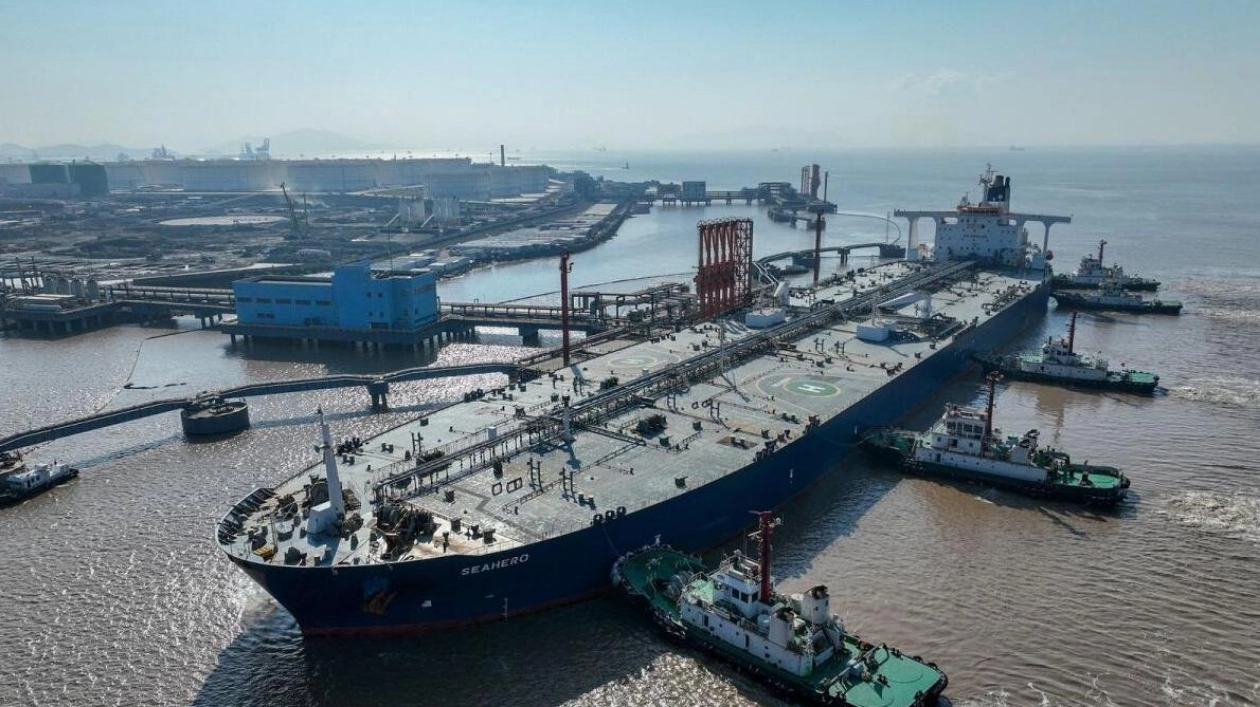China's crude oil imports rebounded in August, reaching their highest level in a year, but the increase was largely driven by earlier lower prices rather than a recovery in consumption. The world's largest crude importer recorded arrivals of 49.1 million metric tonnes in August, equivalent to 11.56 million barrels per day (bpd), according to customs data released on September 10. This marked the highest monthly total since August last year and represented a significant increase from the 9.97 million bpd seen in July, which was the weakest monthly total in nearly two years.
While August's imports appear robust, it's important to note that they are still down 7% compared to the same month in 2023, and imports for the first eight months of this year are 3.1% lower than those for the same period last year. The market is questioning whether August's rebound in imports signals the beginning of a recovery in China's crude demand or if it more likely reflects the lower oil prices that were prevalent when August-arriving cargoes were arranged.
China's refiners typically increase imports when they perceive prices to be competitive and reduce them when they believe prices have risen too high or too quickly. Cargoes that arrived in August were likely arranged in May and June, a period when global crude prices were declining. Global benchmark Brent futures reached their highest level this year at $92.18 a barrel on April 12, before trending lower to $75.05 on August 5. This likely encouraged Chinese refiners to buy more crude during this period, suggesting that August and September imports could be relatively strong compared to earlier months this year.
However, Brent crude experienced a small rally after the August 5 low, peaking at $82.40 a barrel on August 12, and then fluctuating around $80 until the end of the month. Since then, concerns over global demand, particularly in China, have caused Brent to plummet to $68.68 a barrel on September 10, the lowest level since December 21. The current weakness in global crude prices suggests that China's refiners may increase imports, and if they are buying cargoes now, this increase will likely be reflected in arrivals from November to January.
China's refiners also tend to build inventories when prices are low and draw from these stockpiles when prices rise. Although China does not disclose the volumes of crude flowing into or out of strategic and commercial stockpiles, an estimate can be made by subtracting the amount of crude processed from the total available from imports and domestic output. Using this method, China added about 800,000 bpd to inventories in the first seven months of the year, and it wouldn't be surprising if this pace accelerated in August, given the strong imports and the likely ongoing softness in refinery processing rates.
There is a slight irony in the possibility that China buys more oil due to price drops, just as the Organisation of the Petroleum Exporting Countries (OPEC) reduces its demand forecast for the world's second-largest economy. OPEC's latest report, released on September 10, lowered its forecast for China's demand growth for the second consecutive month, to 650,000 bpd for 2024 from 700,000 bpd the previous month and 760,000 bpd the month before that. Even the revised forecast may be overly optimistic, given that China's crude oil imports for the first eight months of 2024 were 10.98 million bpd, 390,000 bpd below the 11.37 million bpd from the same period in 2023.
For OPEC's forecast to materialize, China's crude imports would need to surge in the fourth quarter. While the current weak prices may lead to an increase, it would be surprising if they surged by the volumes required to meet OPEC's estimate.






